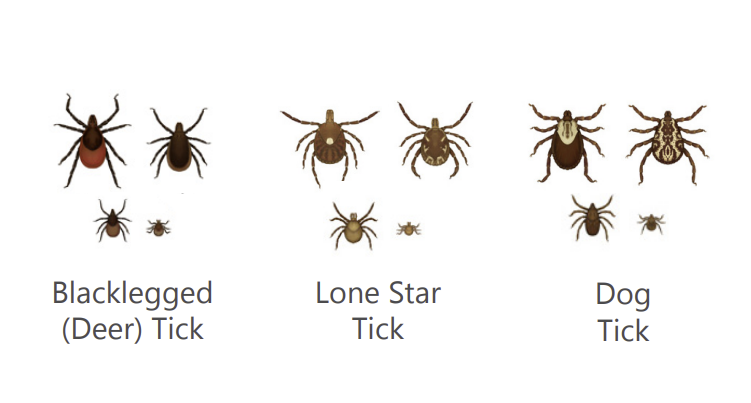Tick Season in New England Is the Worst It’s Been in Years
It’s a bad year for ticks. Increased tick activity across the U.S. has been making the headlines over the past week. Emergency rooms nationwide are seeing a spike in tick bite cases, according to new data from the Centers for Disease Control and Prevention (CDC). July has already seen the highest number of tick-related ER visits since 2019, with the Northeast reporting the most cases. While May typically marks the peak for tick-bite emergencies, these rising numbers have prompted health officials to remind the public about the dangers these tiny pests can pose.

So why are ticks becoming more active?
Ticks are active as long as temperatures remain above freezing. Climate change has played a major role in extending the tick season by causing shorter, milder winters and longer, hotter summers, conditions that increase tick survival and lengthen their period of activity. Warmer temperatures have also enabled ticks to expand into new areas where they previously couldn’t survive, a trend expected to continue in the years ahead. This year, researchers in New England have reported the spread of three invasive tick species across the Northeast: the Lone Star tick, Gulf Coast tick, and Asian longhorned tick.
Climate change is also shifting the habitats of many host species that ticks rely on to complete their life cycle. As temperatures warm, animals like deer, rodents, and rabbits are expanding their ranges. Additionally, an expert from the Cornell Integrated Pest Management program noted that an abundant crop of acorns in 2023 provided ample food for acorn-eating wildlife such as deer, leading to population growth that is likely contributing to a rise in tick populations.
Ticks thrive in moist, shaded environments. The wet spring and humid summer New England has experienced in 2025 have created ideal conditions for ticks to remain active and abundant. Properties with leaf litter, dense shrubbery, or tall grass are especially at risk.
What can you do?
One of the most common ticks in New England is the deer tick (also known as the blacklegged tick), which can carry Lyme disease. Adult female deer ticks are roughly the size of a sesame seed (3 to 5 millimeters long) and have a distinctive reddish-orange body with a dark brown or black shield-like area near their head. Males are smaller and darker, often entirely dark brown or black. The nymphs, which are even tinier, about the size of a poppy seed, and translucent, are especially difficult to spot.

Health experts recommend using an insect repellent that specifically states it is effective against ticks, not just mosquitoes or other insects. After spending time outside, perform full-body tick checks and remove any ticks immediately. It’s also advised to shower or bathe as soon as possible, ideally within two hours of coming indoors, and to put your clothing in a dryer on high heat for at least 10 minutes to kill any ticks you may have picked up.
In addition to personal precautions, treating your property with tick control sprays can significantly reduce the number of ticks around your home, creating a safer environment for your family and pets. Professional all-natural tick control treatments are a safe and effective option to minimize tick populations without harming beneficial insects or the environment.
According to the CDC, approximately 476,000 people are diagnosed and treated for Lyme disease each year in the United States. In most cases, a deer tick must be attached for more than 24 hours before it can transmit Lyme disease bacteria. Prompt removal of ticks can greatly reduce your risk of infection.
Contact us today for a free all-natural tick control quote!
Sources:
Barron, J. (2025, June 23). How bad are ticks this year? don’t ask. New York Times. https://www.nytimes.com/2025/06/23/nyregion/ticks-summer-new-york.html
Benadjaoud, Y. (2025, July 7). ER visits for tick bites near record levels this summer across US. ABC News. https://abcnews.go.com/Health/er-visits-tick-bites-record-levels-summer-us/story?id=123538886
Moniuszko, S. (2025, July 10). Tick bites are sending more people to the ER this summer. experts explain why. CBS News. https://www.cbsnews.com/news/tick-bites-emergency-room-visits-2025/
Pfizer. (n.d.). How climate change is affecting the spread of lyme disease-and 5 things you need to know about the disease. https://www.pfizer.com/news/articles/how_climate_change_is_affecting_the_spread_of_lyme_disease_and_5_things_you_need_to_know_about_the_disease
